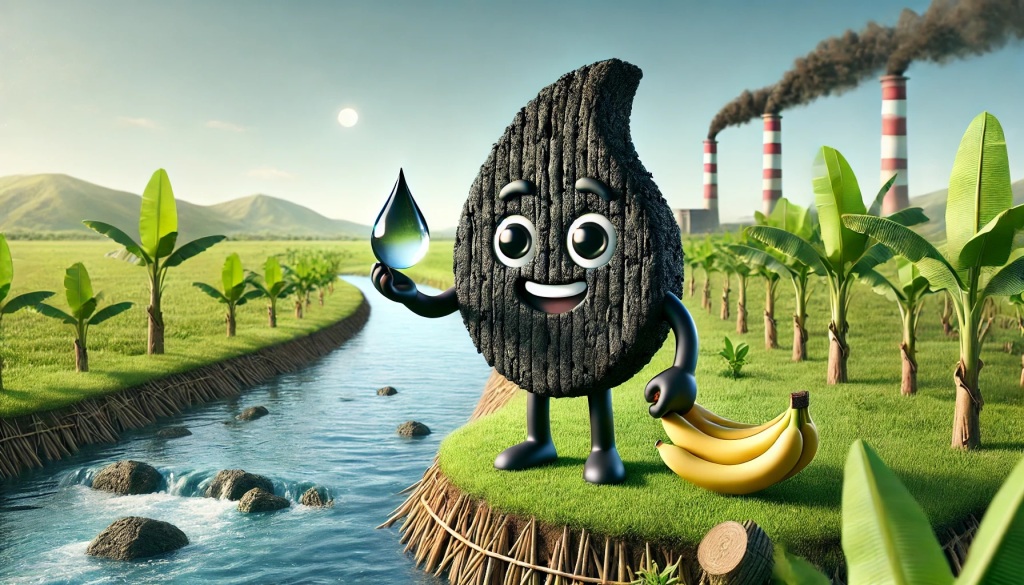Gao, C., Lan, Y., Zhan, Y. et al. Preparation of porous biochar from fusarium wilt-infected banana straw for remediation of cadmium pollution in water bodies. Sci Rep14, 13821 (2024). https://doi.org/10.1038/s41598-024-63954-4
Cadmium pollution is a serious global issue linked to health problems such as cancer and kidney damage. Addressing this requires innovative solutions, particularly for cleaning contaminated water. Researchers have found that banana straw, often discarded and contributing to pollution, can be repurposed to tackle this problem effectively.
Banana straw, a byproduct of banana farming, is usually left to decay or burn, exacerbating pollution and spreading diseases like fusarium wilt. However, a new study explores using biochar made from this waste material to clean cadmium from water. The study found that biochar derived from fusarium wilt-infected banana straw is effective in adsorbing cadmium, a toxic metal, from polluted water.
The process begins by pyrolyzing the infected banana straw at high temperatures to produce biochar. This biochar is then treated with potassium hydroxide (KOH) to enhance its properties. The KOH modification increases the specific surface area and pore volume of the biochar, making it more efficient at capturing cadmium ions from water. The modified biochar showed a significant increase in cadmium adsorption capacity compared to untreated biochar.
Testing confirmed that the fusarium wilt pathogen is completely eliminated during pyrolysis, ensuring the safety of using the biochar for environmental remediation. Furthermore, the study demonstrated that cadmium adsorption on the modified biochar occurs through a combination of precipitation and complexation with oxygen-containing functional groups on the biochar surface.
This research highlights a sustainable method to manage agricultural waste while addressing a critical environmental challenge. Utilizing banana straw biochar not only mitigates cadmium pollution but also offers a valuable application for what is typically considered waste, contributing to a circular economy and cleaner environment. Future studies will further refine this approach and explore its potential for broader applications in pollution control.






Leave a comment